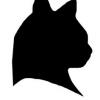- Formiculture.com
- Forums
- Gallery
- Members
- Member Map
- Chat

Ants Australia natural formicarium guide
Started By
CoolColJ
, Jun 30 2018 4:05 AM
7 replies to this topic
#1
 Offline
-
Posted June 30 2018 - 4:05 AM
Offline
-
Posted June 30 2018 - 4:05 AM
- dermy, FeedTheAnts, Mettcollsuss and 2 others like this
Current ant colonies -
1) Opisthopsis Rufithorax (strobe ant), Melophorus sp2. black and orange, Pheidole species, Pheidole antipodum
Journal = http://www.formicult...ra-iridomyrmex/
Heterotermes cf brevicatena termite pet/feeder journal = http://www.formicult...feeder-journal/
#2
 Offline
-
Posted July 6 2018 - 8:46 PM
Offline
-
Posted July 6 2018 - 8:46 PM
That's a good video, I'd watched it before but it was still interesting enough to watch again.
I think if I buy any ants it will be strobe ants as they aren't found anywhere close to where I live or holiday.
Thanks for the link!
I think if I buy any ants it will be strobe ants as they aren't found anywhere close to where I live or holiday.
Thanks for the link!
#3
 Offline
-
Posted July 6 2018 - 9:11 PM
Offline
-
Posted July 6 2018 - 9:11 PM
That's a good video, I'd watched it before but it was still interesting enough to watch again.
I think if I buy any ants it will be strobe ants as they aren't found anywhere close to where I live or holiday.
Thanks for the link!
I keep a colony, and they have really slow growth, probably slower than a large Camponotus species ![]()
But they move in such an interesting manner
Current ant colonies -
1) Opisthopsis Rufithorax (strobe ant), Melophorus sp2. black and orange, Pheidole species, Pheidole antipodum
Journal = http://www.formicult...ra-iridomyrmex/
Heterotermes cf brevicatena termite pet/feeder journal = http://www.formicult...feeder-journal/
#4
 Offline
-
Posted July 7 2018 - 2:00 AM
Offline
-
Posted July 7 2018 - 2:00 AM
I'm hoping to get them and some Camponotus species with distinct banding, the Camponotus I hope to collect, but the strobe ants I'll have to buy.
Also I used to be a gardener and I know a few places where I used to get attacked by jumping jacks, there's no way I'm raiding a nest but maybe I'll see a Queen when they fly. I think I'd sell or swap it though, I still remember the pain and inflammation they cause! When you're gardening running away is not an option, you have to finish weeding or pruning etc. So hard to work when more than half your fingers won't bend!
Also I used to be a gardener and I know a few places where I used to get attacked by jumping jacks, there's no way I'm raiding a nest but maybe I'll see a Queen when they fly. I think I'd sell or swap it though, I still remember the pain and inflammation they cause! When you're gardening running away is not an option, you have to finish weeding or pruning etc. So hard to work when more than half your fingers won't bend!
#5
 Offline
-
Posted July 7 2018 - 2:12 AM
Offline
-
Posted July 7 2018 - 2:12 AM
The banding is usually caused by food filling the gaster and stretching, but not always.
banded sugar ants is a start ![]()
- DaveJay likes this
Current ant colonies -
1) Opisthopsis Rufithorax (strobe ant), Melophorus sp2. black and orange, Pheidole species, Pheidole antipodum
Journal = http://www.formicult...ra-iridomyrmex/
Heterotermes cf brevicatena termite pet/feeder journal = http://www.formicult...feeder-journal/
#6
 Offline
-
Posted July 7 2018 - 9:25 AM
Offline
-
Posted July 7 2018 - 9:25 AM
Definitely! They are said to occur in my area so hopefully I can be in the right place at the right time.
In some ads for them and similar looking Campontonus sp. (humilor? trying to remember spelling ) you can see banding on the gasters of the workers even though they look quite slim. I see some vendors saying you can colour them with their food too. That could be interesting I guess but I'd rather them as nature intended.
) you can see banding on the gasters of the workers even though they look quite slim. I see some vendors saying you can colour them with their food too. That could be interesting I guess but I'd rather them as nature intended.
In some ads for them and similar looking Campontonus sp. (humilor? trying to remember spelling
#7
 Offline
-
Posted July 7 2018 - 11:30 AM
Offline
-
Posted July 7 2018 - 11:30 AM
Watched the vid, not a fan of naturalistic nests though. But these look nice.
#8
 Offline
-
Posted July 7 2018 - 2:06 PM
Offline
-
Posted July 7 2018 - 2:06 PM
Definitely! They are said to occur in my area so hopefully I can be in the right place at the right time.
In some ads for them and similar looking Campontonus sp. (humilor? trying to remember spelling) you can see banding on the gasters of the workers even though they look quite slim. I see some vendors saying you can colour them with their food too. That could be interesting I guess but I'd rather them as nature intended.
Humilior are quite small though, and a pain in the [censored]. They do have bands but not really distinct as they are more transparent looking
mine, before I released them

- DaveJay likes this
Current ant colonies -
1) Opisthopsis Rufithorax (strobe ant), Melophorus sp2. black and orange, Pheidole species, Pheidole antipodum
Journal = http://www.formicult...ra-iridomyrmex/
Heterotermes cf brevicatena termite pet/feeder journal = http://www.formicult...feeder-journal/
0 user(s) are reading this topic
0 members, 0 guests, 0 anonymous users














